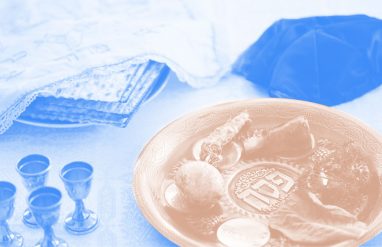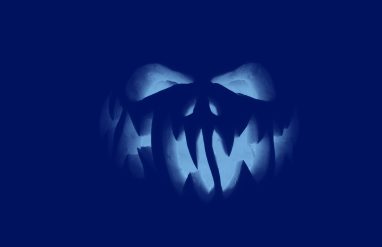During the holidays, kids hope to receive that one toy they have been dreaming of all year. Popular toys come and go, but some of them are still fondly remembered by multiple generations. When naming a toy, it is important to pick something catchy and memorable so that kids will know that yours is the best. That being said, the origins of the names of many classics range from simple to odd to downright mysterious. We decided to dive into the toy box and find out where the names of many popular toys originally came from.
🎲 Take our quiz!
Don’t forget to come back here after you’ve read through our “playful” list, so you can enjoy the ultimate gamer’s delight: a quiz on all these nostalgic games and toys!
yo-yo
The stringed toy used to walk dogs and shoot moons has many names, but most of us know it as the yo-yo. This name comes from a patent filed in the US during the 1920s by Filipino yo-yo maker Pedro Flores and was inspired by a popular Filipino name for the toy. It is unclear specifically which Philippine language yo-yo comes from, but the name means “come come” in Tagalog. The name yo-yo became so popular it was genericized, which means it now refers to any yo-yo regardless of brand, and no American company can legally trademark this name.
“Come come” and learn about more English words that came from the Philippines.
Frisbee
Speaking of genericization, we have another toy that has nearly suffered this fate. The trademarked name Frisbee comes from the Frisbie Pie Company, an old Connecticut bakery. The story goes that college students referred to Pluto Platters (the old name of the toy) as “Frisbies” because they resembled the pie tins from the bakery. WHAM-O was not a fan of the old name so they decided to adopt this new name for a toy also known generically as a “flying plastic disc.”
Barbie
Only the real Barbie fans could tell you that Barbie’s full name is Barbara Millicent Roberts. The toy is named after the daughter of businesswoman and Barbie inventor Ruth Handler. As a bonus bit of (kinda disturbing) trivia, Barbie’s boyfriend Ken is named after Ruth’s son, Kenneth.
Slinky
Here is one for the dictionary fans—like us! The name of this toy was chosen by Betty James, the wife of Slinky inventor Richard James. In 1944, Betty looked in the dictionary and found the actual word slinky, which means “having graceful movements,” and thought it described the toy perfectly.
Tamagotchi, Atari, and Nintendo
’80s and ’90s kids should be familiar with this trio of Japanese-inspired names. According to most sources, the name Tamagotchi is a mashup of the Japanese word tamago (“egg”) and the English word watch, (“uotchi” in Japanese.)
The name of the American company Atari comes from the Japanese word atari, which is used in the Japanese game of Go similarly to the word check in the game of chess.
The symbols that make up the name Nintendo have often been said to mean “leave luck up to Heaven.” This translation makes sense when you consider that Nintendo was originally founded to sell cards used in gambling games.
Furby
Believe it or not, the Tamagotchi was actually the inspiration for the hairy gremlin-like ’90s craze known as Furbies. Two of Furby’s creators, David Hampton and Caleb Chung, liked the Tamagotchi but noticed that kids couldn’t pet it or cuddle with it as they often liked to do with real pets or with stuffed toys. Hampton’s new furry pet toy was originally referred to as “Furball,” but the more cutesy Furby eventually stuck.
Radio Flyer
These little red wagons are often referred to by the name of the company that makes them, Radio Flyer. The wagons were originally called “Liberty Coasters,” named after the Statue of Liberty. When the Liberty Coaster Company started making more types of toys, founder Antonio Pasin picked a new name for his company based on his two favorite inventions: the radio and the airplane. The name Radio Flyer has graced the sides of the wagons ever since.
pogo stick
The origin of the name pogo stick is actually shrouded in mystery. Several toys that resembled springy stilts or hopping sticks can be traced back to patents filed by several different inventors. In the 1920s, one of these patents was filled by two German men, Max Pohlig and Ernst Gottschall. A common theory is that the pogo in pogo stick comes from the last names of Pohlig and Gottschall. For now, this one lacks a definitive answer.
trampoline
Let’s keep on bouncing and jump on over to the trampoline. This springy device was invented by George Nissen and patented in 1945. Nissen was able to trademark the invention under the name Trampoline. According to Nissen, the name came from the Spanish word trampolín, meaning “diving board.”
domino
The name of this simple toy seems to have a rather odd origin. The word domino used to refer to the black-and-white blocks may have been linked to earlier uses of domino, meaning a black hooded cloak with a mask worn at masquerade parties or by priests.
dice
Often to the surprise of many, dice is the plural form of the word die. The word die is thought to originally come from the Latin datum, in the sense of “that which is decreed.” In the case of dice, it is fate that is making a decree by demanding that you once again fall into financial ruin by landing on Boardwalk.
chess
This one is a bit of a ride. The name chess comes from the Old French word esches, the plural of eschec (“check”). The word check actually has a very early connection to the game of chess, as it came through the Old Spanish xaque and the Arabic shāh from the Persian word shah, meaning “king.” Then, as now, the word was used in the game to warn the opponent that their king was in serious danger. While the word chess kept its attachment to the game, the word check has since acquired many different senses in English.
tiddlywinks
Tiddlywinks is an old game and can be traced back to the days of Victorian England. The word tiddlywinks is said to come from English slang; it combines the word tiddly, meaning “little” or “tiny,” and wink, a word used to refer to the game pieces. At times, the word tiddlywink was used to refer to the game as well as the pubs and bars where it was popularly played.
jacks
The game of jacks, also called knucklebones, takes its name from the pieces needed to play it. Jacks is short for jackstones. Jackstone is a variant of the old word checkstone, which referred to small pebbles that were used to play the game.
jack-in-the-box
The term jack-in-the-box can be traced back all the way to the 1500s, where it was used to refer to conmen who swapped out empty boxes for boxes that were supposed to have payments in them.
The toy itself, though, is often thought to have been inspired by the legend of Sir John Schorne, who supposedly trapped the Devil inside an old boot. It is said that the earliest jack-in-the-boxes depicted this story by putting a little wooden devil inside the spring-loaded box. This would mean that the original Jack in that box is actually the Devil himself.
What’s the deal with all these Jacks? Learn why the name Jack is so popular in fairy tales, too.
kaleidoscope
The origins of this psychedelic toy with a seemingly odd name are actually very simple: it combines the Greek words kalós, meaning “beautiful,” and eîdos, meaning “shape,” with the combiner -scope, used to mean “an instrument for viewing.” Putting it all together, a kaleidoscope is a viewing tool you use to see beautiful shapes!
Crayola
The name for this colorful crayon-creating company was coined by Alice Binney, the wife of company founder Edwin Binney. According to Crayola, the name combines the French craie, meaning “chalk,” with the word oleaginous, a fancy word that means something contains oil.
LEGO
According to LEGO, the LEGO company takes its name from the Danish words leg godt, which means “play well.”
Tonka
The name of this tough toy truck maker is said to have come from the Dakota Sioux word tanka, meaning “large” or “great.” Later, the company would adjust its name to match the name of Lake Minnetonka, which the company headquarters overlooked.
WIFFLE ball
The WIFFLE ball was created by David Mullany in the 1950s. During that time, Mullany’s son and the neighborhood kids would refer to baseball strikes as “wiffs.” Because the early WIFFLE balls were easy to curve and hard to hit, they resulted in a lot of wiffs. The name stuck and Mullany’s family still makes WIFFLE balls today.
Jenga
The game of Jenga was invented by Leslie Scott, who was born in Tanzania and traveled across Africa during her childhood. Scott and her family would play a game where they tried to stack towers of bricks as high as possible without them falling over. Scott would later make a game based on this idea and name it Jenga, which comes from the Swahili word kujenga, meaning “to build.”
Yahtzee
Yahtzee! The name of this dice game has a simpler story than you might expect. It is said that the name Yahtzee can be traced back to a Canadian couple who used to play the game on their yacht. The game was known as “The Yacht Game” or “The Yacht at Sea Game.” Decades would pass, trademarks would be filed, ownership of the game would constantly change, and over time the “The Yacht Game” would be marketed as Yahtzee.
NERF
The original NERF ball was created by a team led by inventor Reyn Guyer. The name NERF was chosen as the name of an entire line of foam toys by the Parker Brothers marketing team. According to Guyer, the name NERF was taken from the name of “nerf bars” that are used in jeeps to prevent damage to the vehicle.
pogs
Pogs, also known as milk caps, were another ’90s sensation alongside the Furby and the Tickle-Me-Elmo. Originally, the game was played using bottle caps from either bottles of milk or POG juice. POG juice’s name comes from its ingredients: a mixture of passionfruit, orange, and guava nectar.














